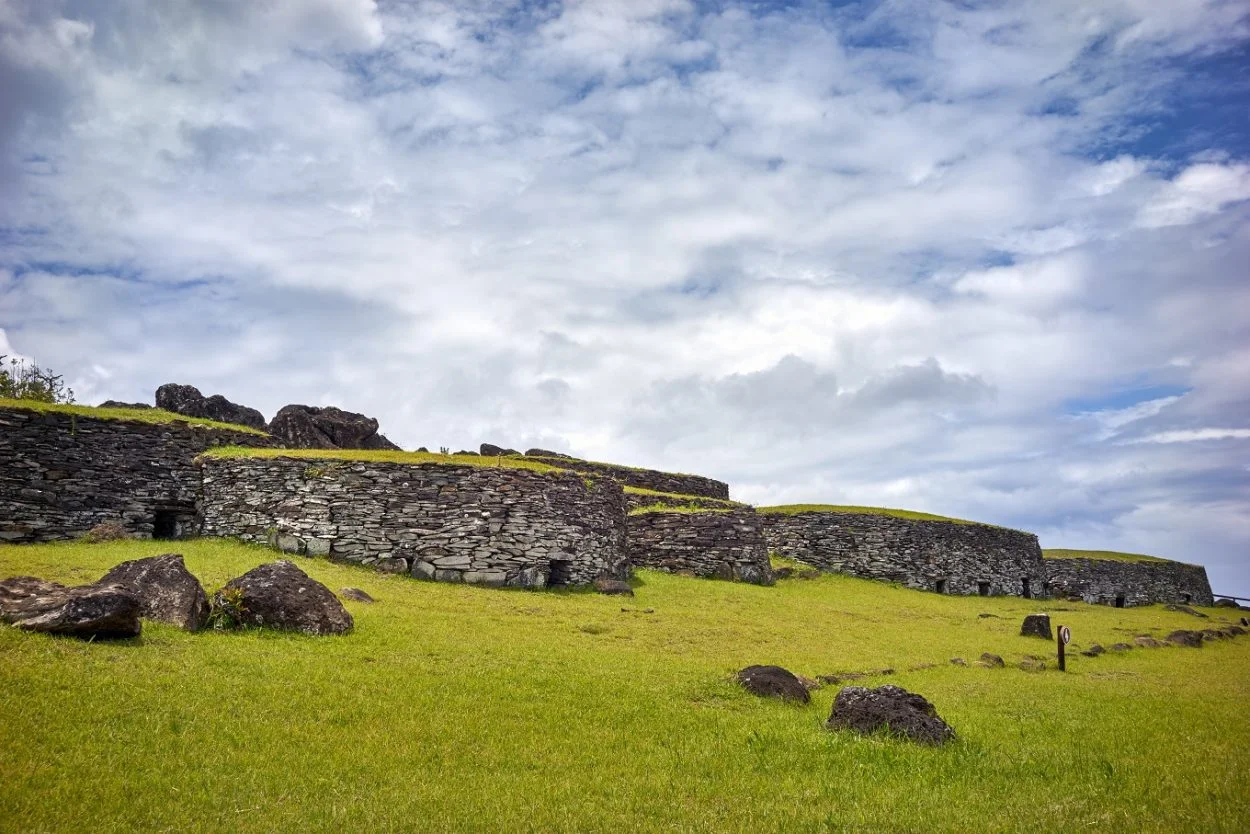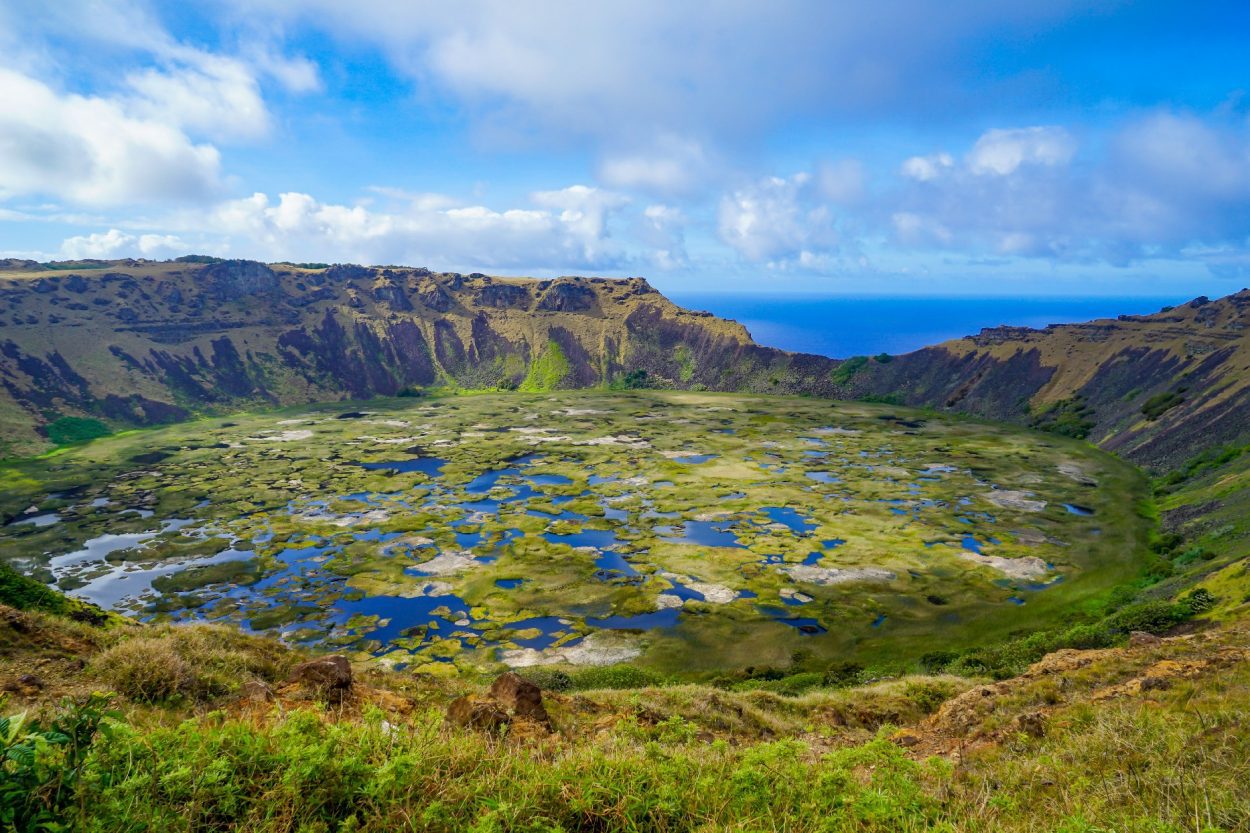Orongo is a stone settlement and seasonal ceremonial centre, built by the indigenous Rapa Nui people on the edge of the Rano Kau Volcano caldera, located on the southwestern tip of Easter Island.
With the overpopulation and limited resources on the island, the traditional maoi culture was in decline, resulting in the emergence of the Bird Man Cult around AD 1540.
The cult deified Make-make (the creator of humanity and the god of fertility) as their chief god, along with Hawa-tuu-take-take (the chief of the eggs), his wife Vie Hoa, Vie Kenatea, and their four servant gods.
Orongo was founded in the sacred precinct of Mata Ngarau during the Huri-Moai period between AD 1680-1867, with the construction of over 50 dry-laid stone masonry houses laid out in a plan of overlapping clusters. Evidence of prior activity on the summit has been identified by various pictographs and rock carvings, consisting of images depicting 375 tangata manu (Birdmen), 195 komari, and 140 faces.

The settlement served as the finale of the Tangata Manu annual games, a traditional competition to facilitate the transfer of power between competing clans. During the Tangata Manu, the rock carvings were painted to evoke the mana of the previous sacred Birdmen, and clans would perform sacred rituals whilst chanting the names of all eight gods.
Competitors were revealed in dreams by ivi-attuas or prophets, who in turn would then appoint a hopu (man of lesser status) and task them with collecting the first sooty tern (manu tara) egg of the season from the islet of Motu Nui. The hopu would then swim back to Rapa Nui, and climb the sea cliff of Rano Kau to Orongo, where they would present the egg to their patron.

The winner was the first patron to receive the egg, who was declared tangata-manu, receiving the sole rights for their clan to collect that season’s harvest of wild bird eggs and fledglings from Motu Nui. The tangata-manu would then go into seclusion in a ceremonial house, wearing a headdress made from human hair and grow his nails.
By the mid to late 19th century, many of the islanders had died of disease introduced by European explorers, or were enslaved by Peruvian slavers. With the arrival of Christian missionaries to the island, the Tangata Manu was suppressed, and Orongo was left abandoned.
Header Image Credit : FCG – Shutterstock





